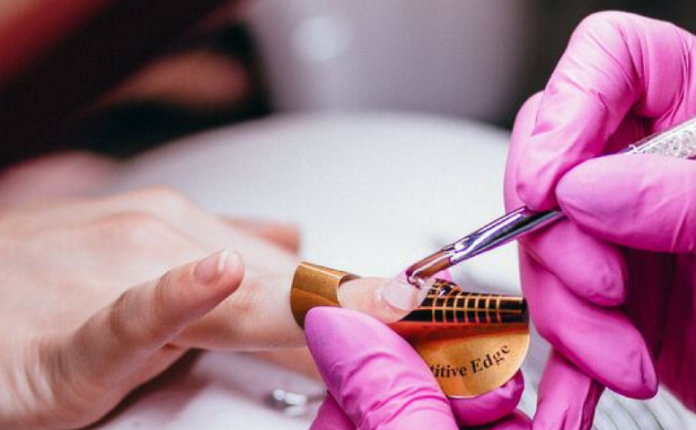You get what you pay for
In the world of fake nails (or nail enhancements), the adage “what you pay is what you get” is true.
Well-trained, passionate manicurists don’t come cheap. They also work longer hours than other manicurists.
Today’s new leave-in gels are great for strengthening natural nails but can cause damage if not removed properly.
Gels can also be expensive in a salon or at home
If I had to pick one thing that would be the least destructive and cheapest, it would be glue on the nails – but I also have a huge caveat!
delete
If you pry open or pop out any nail enhancements, you’ll layer your nails with glue!
To apply plastic glue to your nails, you must file the plastic down until it is thin and then soak it in acetone. Dip your fingertips completely into pure acetone up to the cuticle line of the nail until it works under the plastic nail, dissolving the plastic and glue.
Acetone evaporation is very cold and dry for your skin, so you must apply olive oil before doing a 5-10 minute acetone soak.
A better way!
In 2017, I discovered that using a nail clip, I could heat acetone and wait for it to dissolve the nail tip and glue.
This is a better solution for removing all nail reinforcement.
Clamps are easy to apply compared to the “foil method.” The heat from your body warms the acetone, making it work better.
You’ll fall in love with them and wonder how you ever lived without them!
Want to be natural?
First, understand why your nails break and flake and how to prevent it.
I can tell you that anyone unhappy with their nails has dry and brittle nails. This is caused by water absorption, the use of harsh soaps, and the removal of polishing.
Hug your spine
We don’t want to wear away the bumps and make them thin. That’s why…
If you think of the lines on your nails as mountains and valleys, which has more dirt?
Up the mountain!
It’s the same with our nails. The ridge is filled with more layers of keratin. The nail ridge is the healthy part of the nail.
The valley is weaker. So sharpening your nails removes a healthy layer of keratin to match the lowest part of the nail.
The solution is simple.
Use two coats of your favorite ridge-fill base coat to even out the look of the ridge.
Oh, and get rid of those damn buffers!
Protect your natural nails with nail polish.
Many people think nail polish is bad for nails, but it can help your nails not absorb moisture.
Too much water absorption can lead to flaking and splitting.
In my article, I explain in more detail how our nails absorb water and how to use nail polish to prevent it.
The polishing layer also provides temporary strength when you wear it.
Acetone does dry out your skin and nails, but it’s necessary to dissolve protective nail polish.
Instead of worrying about acetone, it’s better to use it.
Before you remove your nail polish, apply any cheap kitchen oil to your skin. Let the acetone dissolve the cheap oil instead of your body oil.
Then apply piercing Jojoba wax ester nail and cuticle oil every 2 to 8 hours. Your nails will absorb enough oil to “stick” your more than 50 layers of keratin together.
Clean your nails with rubbing alcohol to remove dust and oil from the surface of your nails. Then, apply the primer.
In short
My advice is to be patient with yourself and your nails.
Learn how to care for them properly when they are very short.
One of the biggest lessons I’ve learned from watching the nail art community for over 7 years is that short nails are beautiful when well-maintained.





